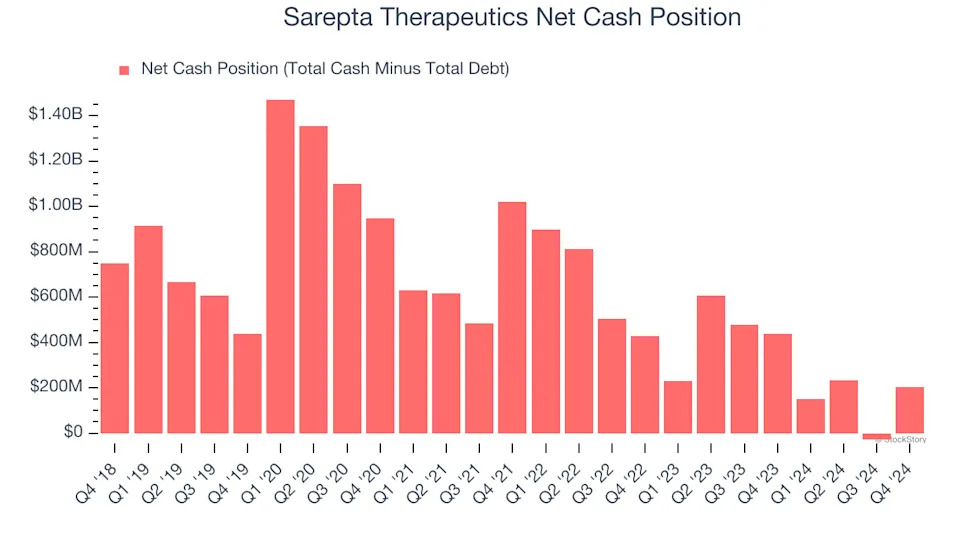
3 Reasons to Avoid SRPT and 1 Stock to Buy Instead
The past six months haven’t been great for Sarepta Therapeutics. It just made a new 52-week low of $52, and shareholders have lost 56.6% of their capital. This may have investors wondering how to approach the situation.
Is there a buying opportunity in Sarepta Therapeutics, or does it present a risk to your portfolio? Get the full stock story straight from our expert analysts, it’s free .
Despite the more favorable entry price, we're swiping left on Sarepta Therapeutics for now. Here are three reasons why we avoid SRPT and a stock we'd rather own.
Why Is Sarepta Therapeutics Not Exciting?
Pioneering treatments for a devastating childhood muscle-wasting disease that primarily affects boys, Sarepta Therapeutics (NASDAQ:SRPT) develops and commercializes RNA-targeted therapies and gene therapies for rare genetic disorders, primarily Duchenne muscular dystrophy.
1. Fewer Distribution Channels Limit its Ceiling
Larger companies benefit from economies of scale, where fixed costs like infrastructure, technology, and administration are spread over a higher volume of goods or services, reducing the cost per unit. Scale can also lead to bargaining power with suppliers, greater brand recognition, and more investment firepower. A virtuous cycle can ensue if a scaled company plays its cards right.
With just $1.90 billion in revenue over the past 12 months, Sarepta Therapeutics is a small company in an industry where scale matters. This makes it difficult to build trust with customers because healthcare is heavily regulated, complex, and resource-intensive.
2. Free Cash Flow Margin Dropping
Free cash flow isn't a prominently featured metric in company financials and earnings releases, but we think it's telling because it accounts for all operating and capital expenses, making it tough to manipulate. Cash is king.
As you can see below, Sarepta Therapeutics’s margin dropped by 22.7 percentage points over the last five years. It may have ticked higher more recently, but shareholders are likely hoping for its margin to at least revert to its historical level. Almost any movement in the wrong direction is undesirable because it’s already burning cash. If the longer-term trend returns, it could signal it’s becoming a more capital-intensive business. Sarepta Therapeutics’s free cash flow margin for the trailing 12 months was negative 18%.

3. Short Cash Runway Exposes Shareholders to Potential Dilution
As long-term investors, the risk we care about most is the permanent loss of capital, which can happen when a company goes bankrupt or raises money from a disadvantaged position. This is separate from short-term stock price volatility, something we are much less bothered by.
